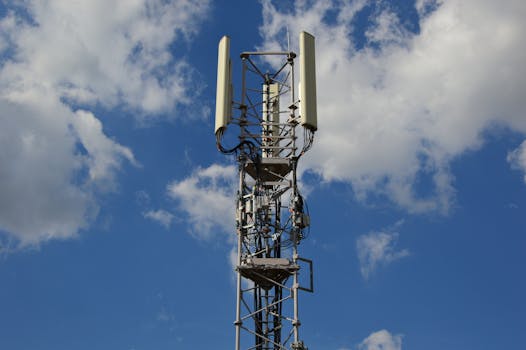
GEO Satellites: Understanding the Technology and its Applications – WordPress
GEO satellites are a crucial part of modern telecommunications, providing a wide range of services including television broadcasting, internet connectivity, and weather forecasting. In this article, we will explore the technology behind GEO satellites, their applications, and the benefits they offer. As the focus keyword, GEO satellites will be discussed in detail, starting with their definition and characteristics.
GEO satellites, or Geostationary satellites, are a type of satellite that orbits the Earth at an altitude of approximately 36,000 kilometers. They are called geostationary because they remain stationary in the sky, relative to a fixed point on the Earth’s surface. This allows them to provide continuous coverage of a specific region, making them ideal for applications such as television broadcasting and telecommunications. The technology behind GEO satellites is complex, involving advanced materials, propulsion systems, and communication equipment.
The first GEO satellite was launched in 1963, and since then, hundreds of these satellites have been launched into orbit. They have become an essential part of modern life, providing a wide range of services that we rely on daily. Some of the key applications of GEO satellites include television broadcasting, internet connectivity, weather forecasting, and navigation. They also play a critical role in disaster response and recovery, providing vital communication services during emergencies.
Characteristics of GEO Satellites
GEO satellites have several characteristics that make them unique and useful for a wide range of applications. One of the most important characteristics is their geostationary orbit, which allows them to remain stationary in the sky. They also have a high-gain antenna, which enables them to transmit and receive signals with high precision. Additionally, GEO satellites are equipped with advanced propulsion systems, which allow them to maintain their orbit and make adjustments as needed.
Another important characteristic of GEO satellites is their high power output. They are equipped with large solar panels, which generate the power needed to operate the satellite’s systems. This power is used to transmit signals, operate the propulsion system, and power the satellite’s communication equipment. The high power output of GEO satellites also allows them to transmit signals over long distances, making them ideal for applications such as television broadcasting and telecommunications.
Applications of GEO Satellites
GEO satellites have a wide range of applications, including television broadcasting, internet connectivity, weather forecasting, and navigation. They are also used for disaster response and recovery, providing vital communication services during emergencies. In addition to these applications, GEO satellites are also used for scientific research, such as studying the Earth’s climate and monitoring the environment.
Television broadcasting is one of the most common applications of GEO satellites. They are used to transmit television signals to large areas, providing access to entertainment, news, and educational programming. GEO satellites are also used to provide internet connectivity, particularly in areas where terrestrial infrastructure is lacking. This has enabled millions of people around the world to access the internet, bridging the digital divide and promoting economic development.
Benefits of GEO Satellites
GEO satellites offer a wide range of benefits, including global coverage, high reliability, and cost-effectiveness. They provide continuous coverage of a specific region, making them ideal for applications such as television broadcasting and telecommunications. The high reliability of GEO satellites is due to their geostationary orbit, which allows them to remain stationary in the sky and provide continuous service.
The cost-effectiveness of GEO satellites is another significant benefit. They can provide services to a large area, reducing the need for multiple satellites and ground-based infrastructure. This makes them an attractive option for applications such as television broadcasting and telecommunications, where the cost of providing services to a large area can be prohibitively expensive. Additionally, GEO satellites can be used to provide backup services during emergencies, such as natural disasters or network outages.
Conclusion
In conclusion, GEO satellites are a crucial part of modern telecommunications, providing a wide range of services including television broadcasting, internet connectivity, and weather forecasting. Their geostationary orbit, high-gain antenna, and advanced propulsion systems make them unique and useful for a wide range of applications. The benefits of GEO satellites, including global coverage, high reliability, and cost-effectiveness, make them an attractive option for applications such as television broadcasting and telecommunications.


